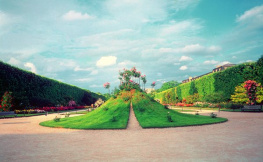Arvède Barine - La Grande Mademoiselle, 1627-1652
Here you can read online Arvède Barine - La Grande Mademoiselle, 1627-1652 full text of the book (entire story) in english for free. Download pdf and epub, get meaning, cover and reviews about this ebook. year: 2019, publisher: Good Press, genre: Detective and thriller. Description of the work, (preface) as well as reviews are available. Best literature library LitArk.com created for fans of good reading and offers a wide selection of genres:
Romance novel
Science fiction
Adventure
Detective
Science
History
Home and family
Prose
Art
Politics
Computer
Non-fiction
Religion
Business
Children
Humor
Choose a favorite category and find really read worthwhile books. Enjoy immersion in the world of imagination, feel the emotions of the characters or learn something new for yourself, make an fascinating discovery.

- Book:La Grande Mademoiselle, 1627-1652
- Author:
- Publisher:Good Press
- Genre:
- Year:2019
- Rating:3 / 5
- Favourites:Add to favourites
- Your mark:
- 60
- 1
- 2
- 3
- 4
- 5
La Grande Mademoiselle, 1627-1652: summary, description and annotation
We offer to read an annotation, description, summary or preface (depends on what the author of the book "La Grande Mademoiselle, 1627-1652" wrote himself). If you haven't found the necessary information about the book — write in the comments, we will try to find it.
La Grande Mademoiselle, 1627-1652 — read online for free the complete book (whole text) full work
Below is the text of the book, divided by pages. System saving the place of the last page read, allows you to conveniently read the book "La Grande Mademoiselle, 1627-1652" online for free, without having to search again every time where you left off. Put a bookmark, and you can go to the page where you finished reading at any time.
Font size:
Interval:
Bookmark:

MADEMOISELLE
NEW YORK AND LONDON
PAGE
| page |
| La Grande Mademoiselle Frontispiece |
| From a steel engraving. |
| Marie de Mdicis |
| From a steel engraving. |
| The Chteau of Versailles from the Terrace |
| After the painting by J. Rigaud. |
| The Tuileries from the Seine in the 16th Century |
| From a contemporary print. |
| Madame de Svign |
| From an engraving of the painting by Muntz. |
| Cardinal Richelieu |
| The Abbey of St. Germain Des-pres in the 16th Century |
| From an old print. |
| Louis XIII., King of France and of Navarre |
| From an old print. |
| Corneille |
| From an engraving of the painting by Lebrun. |
| Racine |
| From a steel engraving. |
| The Htel de Richelieu in the 17th Century |
| From a contemporary print. |
| A Game of Chance in the 17th Century |
| From an engraving by Sbastien Leclerc. |
| Marquis de Cinq-Mars |
| Anne of Austria |
| View of the Louvre from the Seine in the 17th Century |
| From an old print. |
| Henriette, Duchesse d'Orlans |
| From a steel engraving. |
| St. Vincent De Paul |
| From a steel engraving. |
| Duchesse de Chevreuse |
| Cardinal Mazarin |
| Mademoiselle de Montpensier |
| From a steel engraving. |
| The Tower of Nesle |
Font size:
Interval:
Bookmark:
Similar books «La Grande Mademoiselle, 1627-1652»
Look at similar books to La Grande Mademoiselle, 1627-1652. We have selected literature similar in name and meaning in the hope of providing readers with more options to find new, interesting, not yet read works.
Discussion, reviews of the book La Grande Mademoiselle, 1627-1652 and just readers' own opinions. Leave your comments, write what you think about the work, its meaning or the main characters. Specify what exactly you liked and what you didn't like, and why you think so.









